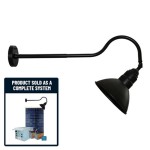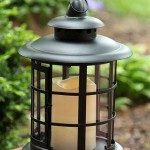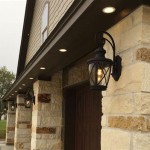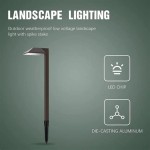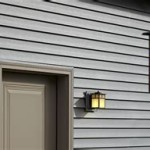How Outdoor Wood Furnaces Work: A Comprehensive Guide
Outdoor wood furnaces, also frequently referred to as outdoor wood boilers, offer an alternative heating solution for homes, businesses, and agricultural facilities. Understanding how these systems function is crucial for determining their appropriateness, optimizing performance, and ensuring safe operation. This article will delve into the mechanics of outdoor wood furnaces, outlining the key components, operational processes, and factors influencing efficiency.
The fundamental principle behind an outdoor wood furnace is centralized heating. Instead of individual heating units in each room, the furnace acts as a single source, generating heat that is then distributed throughout the building using a network of insulated pipes. This central approach offers advantages in terms of fuel efficiency and reduced indoor air pollution, as combustion occurs outside the living space.
Typically, an outdoor wood furnace is situated a safe distance from the building it heats, generally between 30 and 100 feet. This placement mitigates the risks associated with indoor wood burning, such as carbon monoxide poisoning, smoke inhalation, and the accumulation of creosote within the chimney. The distance also minimizes the potential for fire hazards within the main structure.
The system consists of several key components, including the firebox where the wood is burned, a water jacket that surrounds the firebox to absorb heat, a water pump to circulate the heated water, insulated underground pipes to transport the hot water, and a heat exchanger, usually located inside the building, to transfer the heat to the building's existing heating system.
The Combustion Process and Heat Transfer
The combustion process within an outdoor wood furnace is similar to that of a traditional wood stove, but it takes place within a controlled environment designed for efficient heat transfer. The furnace is loaded with wood, typically logs of varying sizes, and ignited. Airflow is carefully regulated to promote complete combustion, minimizing smoke and maximizing heat output. Some models incorporate forced-air systems to further improve combustion efficiency.
As the wood burns, it releases heat, which is then absorbed by the water jacket surrounding the firebox. The water jacket is a critical component, essentially a large container filled with water that envelops the firebox. The hot gases produced by the burning wood transfer their energy to the water through conduction. The water then heats up, acting as a thermal storage medium.
Once the water within the jacket reaches a predetermined temperature, the circulating pump is activated. This pump is responsible for moving the heated water from the furnace, through insulated underground pipes, to the heat exchanger inside the building. The insulation surrounding the pipes is vital to minimize heat loss during transit, ensuring that the maximum amount of heat is delivered to the intended destination.
The heat exchanger, often a water-to-air or water-to-water system, effectively transfers the heat from the hot water to the building's existing heating distribution system. In a forced-air system, the hot water heats a coil, which in turn heats the air that is circulated through the ductwork. In a hydronic system, the hot water from the outdoor furnace heats water that is circulated through radiators or radiant floor heating systems.
As the water circulates through the heat exchanger and releases its heat, it cools down. The cooled water is then returned to the outdoor wood furnace to be reheated, completing the cycle. This continuous circulation of water ensures a constant supply of heat to the building.
Key Components and Their Functionality
Several components are essential to the operation of an outdoor wood furnace. Understanding their function is vital to comprehending the overall heating process.
Firebox: The firebox is the heart of the furnace, the chamber where the wood is burned. Its size and construction influence the furnace's capacity and efficiency. Larger fireboxes can accommodate more wood, extending burn times, while well-insulated fireboxes retain heat more effectively. The design of the firebox also affects airflow, influencing the completeness of combustion.
Water Jacket: The water jacket is the heat exchanger within the furnace. It surrounds the firebox and absorbs the heat generated by the burning wood. The volume of water in the jacket affects the furnace's thermal mass. A larger volume of water provides greater thermal inertia, meaning the furnace can maintain a more consistent temperature even with fluctuations in wood burning.
Circulating Pump: The circulating pump is responsible for moving the heated water between the furnace and the heat exchanger in the building. Pump size and flow rate are critical factors, as an undersized pump may not provide adequate heat, while an oversized pump can waste energy. Variable-speed pumps can optimize performance by adjusting the flow rate based on the heating demand.
Insulated Underground Pipes: The insulated underground pipes transfer the heated water between the furnace and the building. The quality of the insulation is crucial to minimize heat loss during transit. Well-insulated pipes can significantly improve overall system efficiency, reducing fuel consumption. Proper burial depth and protection from damage are also essential for long-term performance.
Heat Exchanger: The heat exchanger transfers the heat from the hot water to the building's heating system. The type of heat exchanger (water-to-air or water-to-water) depends on the existing heating infrastructure. A well-matched heat exchanger ensures efficient heat transfer and optimal heating performance. Regular maintenance, such as cleaning, is essential to prevent scaling and maintain efficiency.
Control System: Modern outdoor wood furnaces often include a control system that regulates various aspects of the furnace's operation, such as airflow, water temperature, and pump speed. These systems can optimize efficiency, improve safety, and provide valuable diagnostic information. Some control systems can even be remotely monitored and adjusted, offering enhanced convenience.
Factors Affecting Efficiency and Performance
The efficiency and performance of an outdoor wood furnace are influenced by a variety of factors, including the type of wood used, the design of the furnace, and the quality of installation.
Wood Type and Moisture Content: The type of wood burned significantly impacts the heat output and combustion efficiency. Hardwoods, such as oak and maple, generally provide more heat per unit volume than softwoods, such as pine and fir. The moisture content of the wood is also crucial. Burning wet or green wood significantly reduces efficiency, as a substantial amount of energy is used to evaporate the water instead of generating heat. Ideally, wood should be seasoned (dried) for at least six months to reduce its moisture content to acceptable levels (20% or less).
Furnace Design and Construction: The design and construction of the furnace directly influence its efficiency and longevity. Well-insulated furnaces retain heat more effectively, reducing fuel consumption. Features such as forced-air systems and secondary combustion chambers can improve combustion efficiency and reduce emissions. High-quality materials and construction techniques ensure durability and minimize maintenance requirements.
Installation Quality: Proper installation is critical for optimal performance and safety. This includes sizing the furnace appropriately for the building's heating load, correctly installing the insulated underground pipes, and ensuring proper ventilation and clearances. A poorly installed furnace can be inefficient, prone to problems, and even pose a safety hazard.
Maintenance Practices: Regular maintenance is essential to keep an outdoor wood furnace operating efficiently and safely. This includes cleaning the firebox and chimney to remove creosote, checking the water level and adding water as needed, and inspecting the pump and other components for wear and tear. Neglecting maintenance can lead to reduced efficiency, increased fuel consumption, and potential safety hazards.
Burn Rate and Load Management: Efficient operation also depends on understanding and managing the burn rate and wood load. Overloading the firebox can lead to incomplete combustion and excessive smoke, while underloading can result in frequent refueling. Finding the optimal balance between burn rate and load size is key to maximizing efficiency and minimizing fuel consumption.
Proper Insulation: Ensuring proper insulation of the building being heated is as important as having an efficient furnace. If a building is poorly insulated, heat will escape rapidly, regardless of how effectively the furnace generates heat. Proper insulation in walls, roofs, and windows will significantly reduce heating demand and lower fuel consumption.
In summary, an outdoor wood furnace operates by burning wood in a dedicated firebox, transferring the heat to water, circulating the hot water to a heat exchanger within the building, and then returning the cooled water to the furnace to repeat the cycle. Understanding the function of each component and the factors that influence efficiency is critical for optimizing performance and ensuring safe operation.

How An Outdoor Boiler Works Ez Boilers

How It Works Econoburn Wood Fired Boilers

Wood Boiler Basics Obadiah S Boilers

Best Outdoor Wood Furnace And Parts

How Do Outdoor Wood Furnaces Work Furnace World

How Heat From A Central Boiler Outdoor Furnace Gets To Your Home Wood Furnaces Of Ohio Llc

Cleanfire Outdoor Wood Furnaces

How An Outdoor Boiler Works Ez Boilers

Outdoor Wood Burning Furnace Boilers From Madison Wi To E Iowa

How A Central Boiler Outdoor Wood Furnace Works
Related Posts
